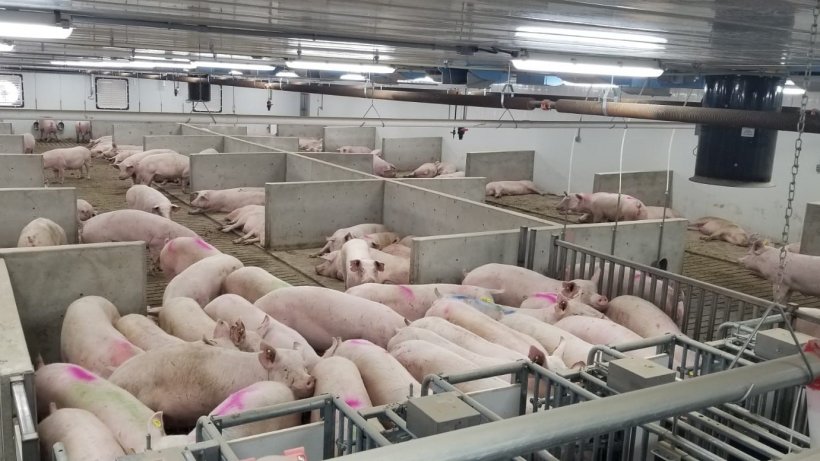
The transition from stalls to group housing can be a difficult stage for both the pigs and the producers who raise them. When this transition goes smoothly, the pigs can continue eating and producing to their full potential. Terry Mandel (Hog Boss) of Haven Colony is a seasoned producer and knows the importance of good temperament during the move.

Haven Colony has been working with Hypor for more than 10 years, using natural mating. In 2018, the colony built a new dry sow and gilt developer barn. Their existing barn was in need of upgrade, and with the upcoming legislation on loose housing in Canada, the colony made a proactive decision to change their approach. With any new facility or strategy, there’s always a question on how things will go. Terry was pleasantly surprised to see the results. “The Hypor Libra* managed the transition to group housing flawlessly. We’ve also increased our overall performance; repeat services have dropped and our conception rate has risen”.
When asked what he noticed most about the Libra* performance, Terry replied, “The calmness and durability. They adapted from stalls to loose housing quickly and were very easy to train”.
After transitioning, Hypor Libra* females are housed in dynamic groups with electronic sow feeders by Nedap. Four days after breeding, females are put into one of three groups: gilts, young sows (parity 2 to 4), and older sows (greater than parity 4).
The easy transition of the Libra* is partially thanks to Hypor’s breeding program, where all purebred sows around the world are kept in loose housing during gestation. By doing this, Hypor is able to select sows that will perform well in group housing.
| Conventional stalls | Loose housing | |
|---|---|---|
| Wean to estrus interval, d | 5.78 | 5.44 |
| Repeat services, % | 4.18 | 3.82 |
| Farrowing rate, % | 88.56 | 90.20 |
| Total born / litter | 15.33 | 15.80 |
| Born alive / litter | 13.67 | 13.92 |
| Weaned / litter | 11.64 | 12.10 |
| Culling rate, % | 45.78 | 37.00 |
| Female deaths and destroyed, % | 3.65 | 3.09 |
| Pigs weaned / mated female / year | 28.75 | 29.29 |
Are you thinking about making the transition from conventional stalls to loose housing? Here are some tips to consider, whether you are completing a retrofit of an existing barn or a new build.
- Visit other systems or farms if possible – there is no standard template for group housing systems (whether a new build or retrofit)
- Consider the pros and cons of the different kinds of feeding systems available – competitive vs. non-competitive
- Consider the space footprint of different housing styles – i.e. shoulder stalls, freedom stalls, pens of different sizes and electronic sow feeders
- Consider the groups of sows you want to keep – dynamic or static
- Consider the kind of management and labour present at the barn. Different housing and feeding systems will require different management and technology considerations.
Contact your local Hypor representative to learn more about the Libra* and how we can help you succeed
August 6, 2020 - Hypor





